Hidden roof damage can lead to costly repairs if not addressed early. Regular inspections, both inside and outside your home, are key to identifying issues before they escalate. Look for warning signs like cracked or missing shingles, sagging rooflines, water stains in the attic, or debris buildup. Pro-Tech Roofing offers free inspections to catch problems early, saving you money and stress. Simple maintenance, such as cleaning gutters and trimming nearby trees, can also prevent damage. For major issues like leaks or structural concerns, professional help is essential to ensure safety and proper repairs.
How To: Conduct a Roof Inspection
Common Signs of Hidden Roof Damage
Spotting roof damage early is key to avoiding expensive repairs. Knowing what to look for can help you tackle problems before they escalate.
Here are some common external and environmental signs that your roof might need attention:
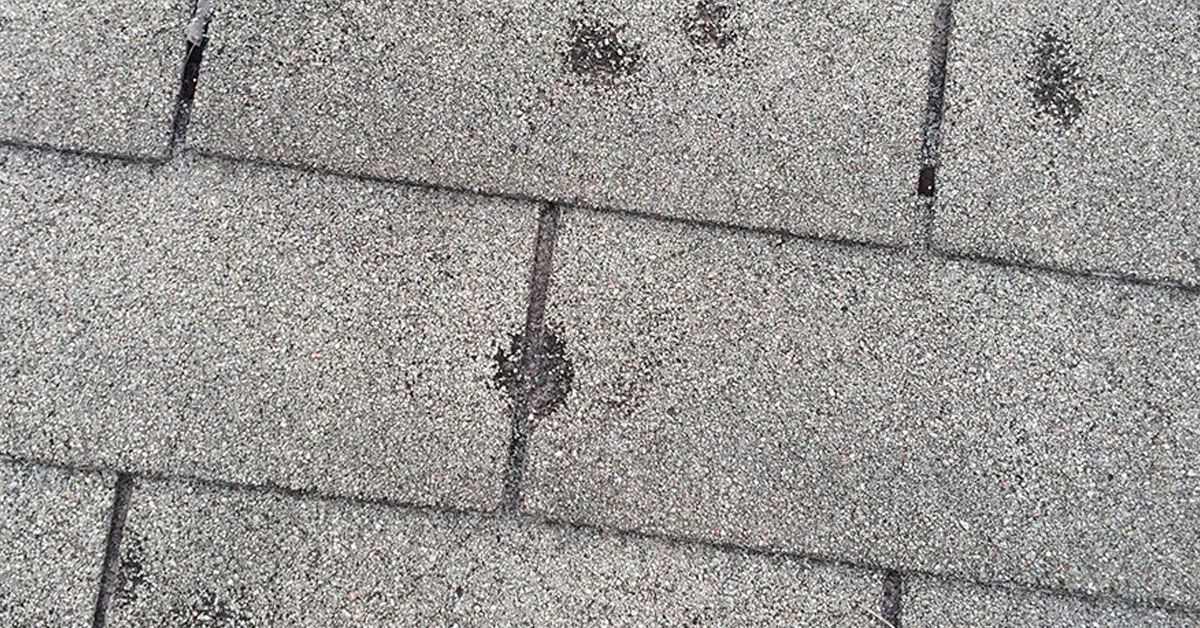
Outside Warning Signs
Cracked, Curled, or Missing Shingles
Shingles in poor condition, whether cracked, curled, or missing, can let moisture seep in, causing damage to the roof deck and underlayment beneath.
Granule Loss
If you notice a buildup of granules in your gutters, it’s a sign that your shingles are wearing down. This loss reduces their ability to protect against UV rays.
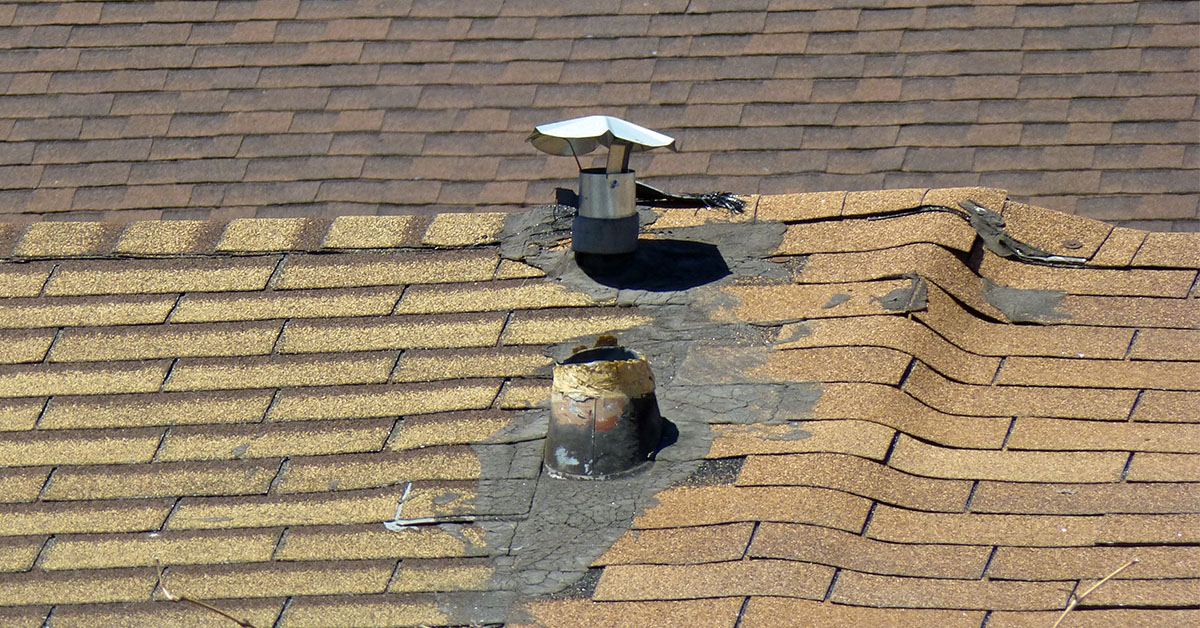
Damaged or Loose Flashing
Flashing that’s rusted, bent, or loose – especially around chimneys, vents, or skylights – can allow water to penetrate, leading to leaks.
Sagging or Dipping Roof Sections
A roofline that sags or has soft spots often points to structural issues or water accumulation, which can weaken the entire system.
Inside Warning Signs
Weather and Pest Signs
Environmental conditions can also expose hidden damage.
Moss or Algae Growth
The presence of moss or algae on your roof indicates trapped moisture, which can degrade materials and even lift shingles over time.
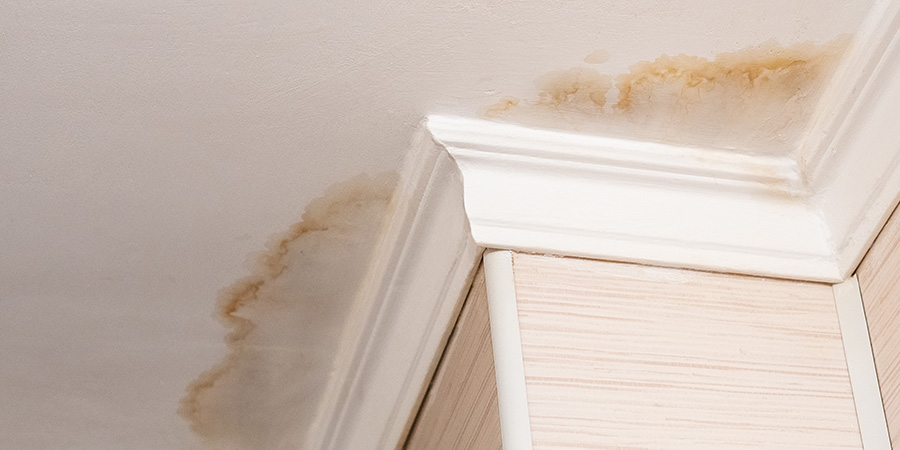
Debris Buildup
Leaves, branches, or other debris can clog your roof’s drainage system, leading to water pooling and faster wear and tear.
Deteriorating Roof Objects
Rusty vents, cracked seals, or aging components like chimneys and skylights are red flags for potential leaks and water damage.
How to Inspect Your Roof Properly
Taking the time to inspect your roof thoroughly can save you from costly repairs down the line. A complete inspection involves checking three main areas, each with its own techniques and safety considerations.
Ground-Level Inspection
Start by examining your roof from the ground using binoculars. This allows you to get a clear view without the need to climb up. Walk around your property and inspect the roof from multiple angles to ensure you don’t miss anything.
Look for signs of damage, like missing or displaced shingles. Pay close attention to the roofline – any sagging or uneven areas could signal structural problems that need immediate attention. Misaligned gutters are also worth noting, as they can affect water drainage.
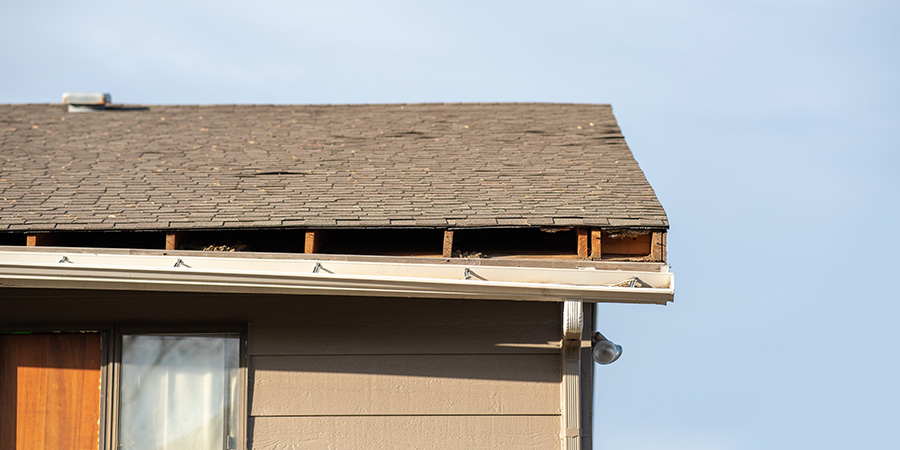
Focus on areas around chimneys, vents, and skylights, as these spots are prone to leaks. Rust, gaps, or loose flashing in these areas can often be spotted from below. Make note of any issues that might require a professional’s input.
Also, observe your roof’s color and texture. Patches that differ in color or texture from the rest of the roof could indicate past repairs or areas of damage that need further investigation.
Once you’ve assessed the exterior, it’s time to move inside and inspect the attic and gutters.
Attic and Gutter Inspection
Your attic can reveal a lot about your roof’s condition. During the day, turn off the lights and look for any pinpricks of light coming through the roof, which could indicate holes.
Feel the underside of the roof deck for soft spots, dampness, or unusual temperature changes. These are often early signs of water damage. Check the insulation for dark stains, mold, or areas that appear compressed – these could point to water intrusion.
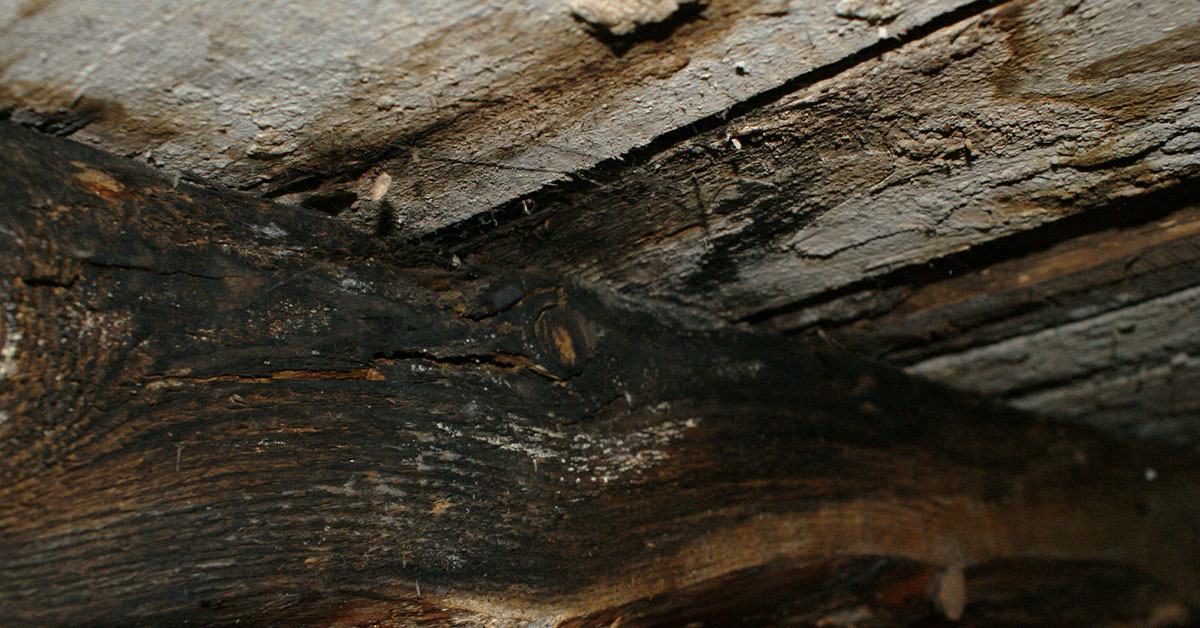
Inspect the rafters and support beams for water stains. Fresh stains are usually dark, while older ones might appear lighter or brown. Any signs of rot or structural damage should be addressed immediately by a professional.
Next, clean out your gutters and check for granules from shingles, as excessive granule buildup suggests shingle wear. Look for rust, holes, or separation at gutter joints. While cleaning, keep an eye out for unusual debris, like bits of flashing or roofing material, which could indicate more serious issues.
If necessary and safe, proceed to inspect the roof itself to confirm your findings.
Safe Roof-Level Inspection
Only climb onto the roof if you’re comfortable with heights and have the proper safety gear. Never attempt this in wet, windy, or icy conditions.
Once on the roof, tread carefully, stepping on rafters rather than directly on shingles to avoid causing damage. Look for shingles that are loose, cracked, or curling – these may not be visible from the ground.
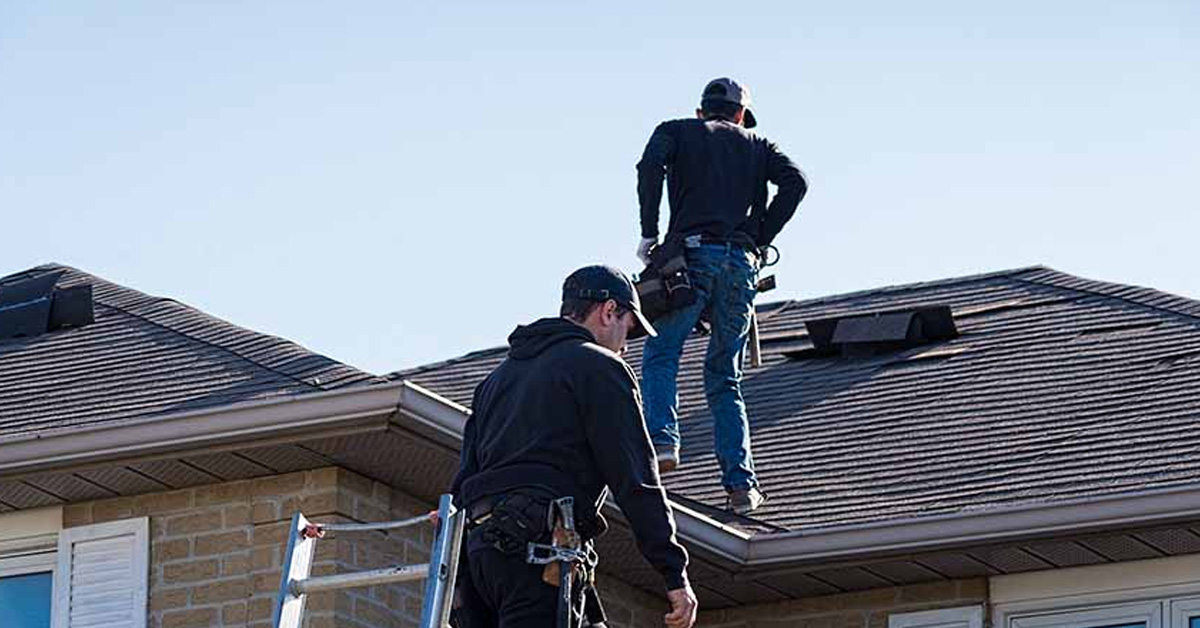
Check roof penetrations like vents, chimneys, and skylights for cracked caulk, loose flashing, or exposed nails. Pay attention to vent boots and chimney caps, as these components often wear out before the roof itself.
Inspect for exposed nails or fasteners that may have come loose, as they can create leak points and cause nearby shingles to lift. Transition zones where different roofing materials meet should also be checked, as they are particularly vulnerable to wear and tear.
Lastly, focus on valleys and edges, which handle the most water flow and stress. Look for debris buildup, damaged valley flashing, or edge shingles that have shifted or pulled away from their proper position. These areas are critical for maintaining your roof’s integrity.
sbb-itb-66ccccd
Maintenance Tips to Prevent Costly Repairs
Taking care of your roof regularly can save you from expensive repairs and help it last longer.
Regular Cleaning and Debris Removal
A clean roof is less likely to develop problems that lead to costly damage. Leaves, branches, and other debris can trap moisture, which encourages rot and mold to form.
Make it a habit to clean your gutters at least twice a year – once in late spring and again in early fall. Blocked gutters can cause water to back up under shingles, leading to leaks that may cost thousands to fix. Always use proper safety gear when cleaning.
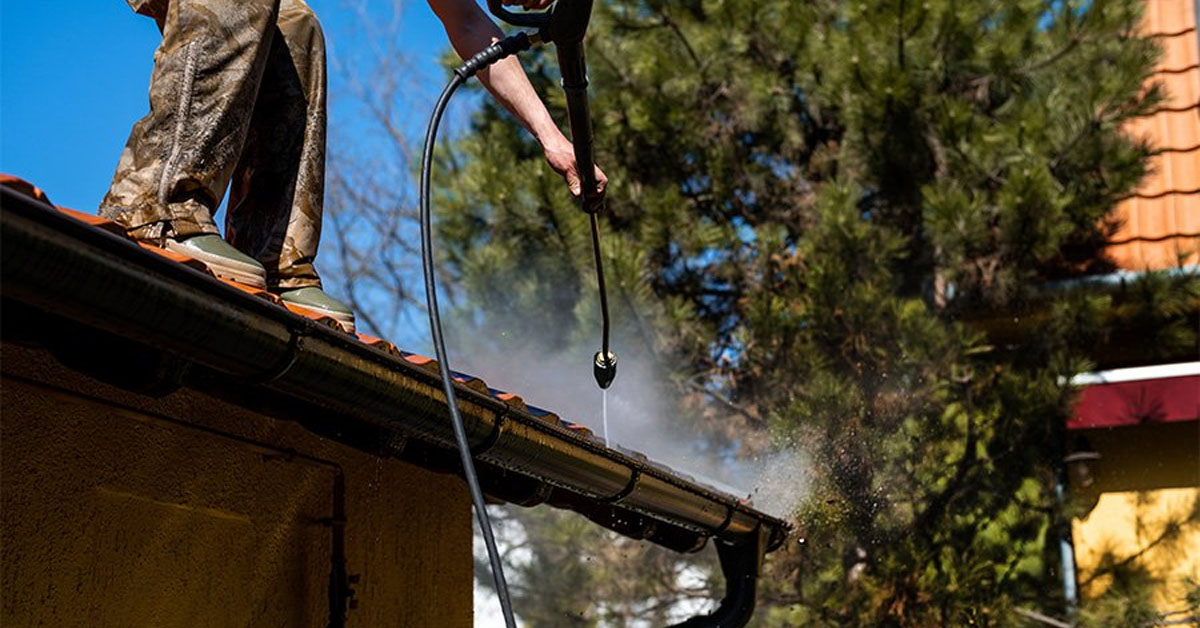
In humid areas, moss and algae are common culprits. They hold onto moisture and can even lift shingles as they grow. To remove moss, use a soft brush and a solution of water mixed with mild detergent. Avoid pressure washers – they can damage shingles and push water into places it shouldn’t go.
Pay extra attention to valleys and low-slope areas, as these spots handle the most water flow. Keep them clear of debris using a leaf blower or soft brush.
If you have trees near your home, trim back branches so they’re at least six feet away from your roof. This prevents branches from scraping against shingles during windy weather and reduces the amount of debris that falls onto your roof.
After cleaning, schedule seasonal inspections to catch any developing issues before they become serious.
Seasonal and Post-Storm Inspections
Inspecting your roof during seasonal transitions and after storms helps you spot damage early. Spring inspections are ideal for checking winter-related damage, such as issues from ice dams, loose shingles from high winds, or structural strain caused by heavy snow.
After severe weather, inspect your roof within 24-48 hours if it’s safe to do so. High winds can lift shingles, hail can cause cracks and granule loss, and heavy rain often exposes weak areas. Take photos of any damage for insurance claims.
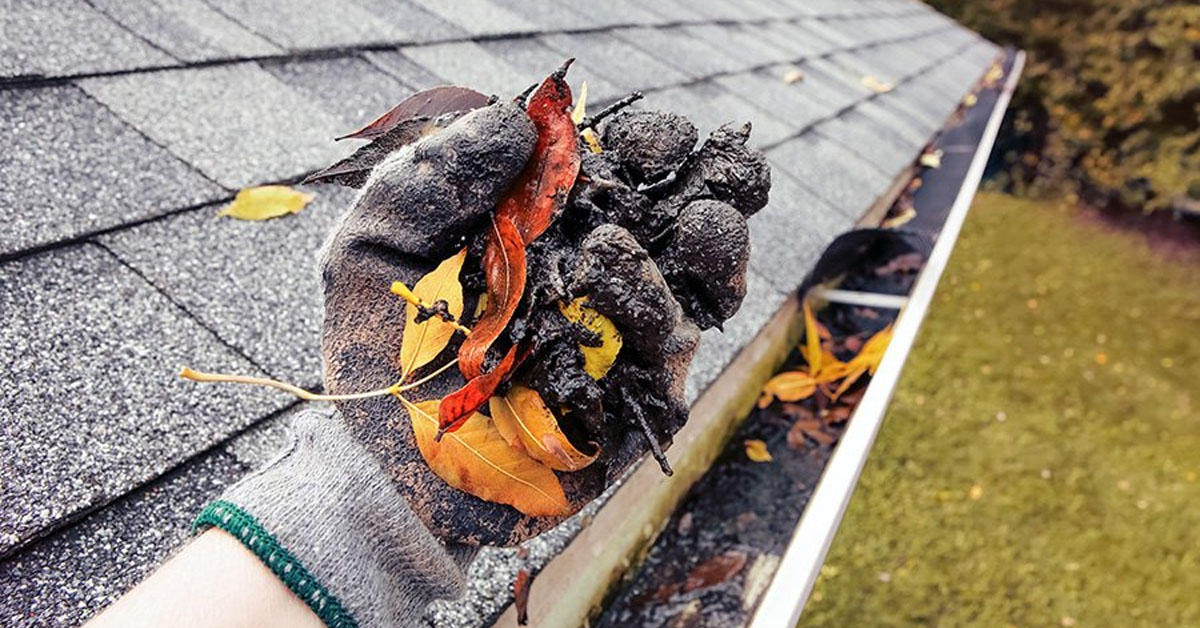
Fall inspections are about preparing for winter. Make sure flashing is secure, gutters are clear, and shingles are firmly attached before cold weather hits.
Summer heat can also take a toll. During hot weather, check for curling or buckling shingles and inspect caulk around vents and other roof penetrations to ensure it hasn’t cracked or pulled away.
Keep a simple log of your inspections, noting the date, weather conditions, and any issues you find. This record can help you spot recurring problems and provide useful information to roofing professionals.
Quick Repairs and Professional Help
Once you’ve cleaned and inspected your roof, address any minor issues right away to avoid bigger problems down the road.
Replacing loose or missing shingles as soon as possible prevents water from seeping into the roof deck. It’s a good idea to keep a few spare shingles from your original installation for quick fixes.
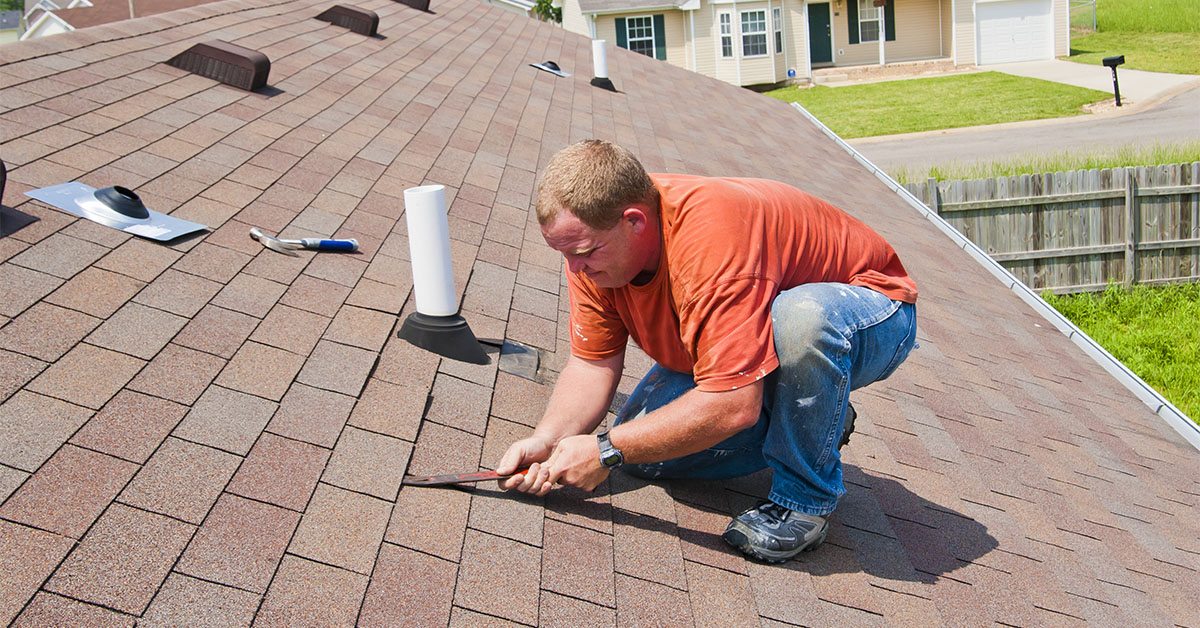
Reseal areas around vents, chimneys, and skylights to keep leaks at bay. Use high-quality roofing caulk during dry weather (between 45°F and 85°F) for the best results. When replacing caulk around flashing, clean the area thoroughly first and apply the sealant sparingly – too much can trap moisture and cause new issues.
For more serious problems, like structural damage, extensive shingle loss, or flashing issues, it’s best to call a professional. These repairs require specialized skills to avoid voiding warranties or making the damage worse.
Professionals can spot hidden problems, use commercial-grade materials, and ensure repairs meet local building codes. If you’re unsure about a repair, a professional evaluation can save you money in the long run by addressing the issue correctly the first time.
Plan for professional roof inspections every 3-5 years, or more often if your roof is over 15 years old. This proactive approach preserves your roof’s warranty and keeps small issues from turning into major expenses.
When to Call a Professional Roofing Service
Keeping up with routine maintenance can help your roof last longer, but some situations call for expert attention to avoid safety hazards and costly repairs.
Problems That Need Professional Help
Even with regular inspections and small fixes, there are certain warning signs that demand immediate attention from a skilled roofer.
Structural damage is a major red flag. If you notice sagging roof lines or uneven areas, it’s time to call in the experts. These issues often point to deeper problems, such as damage to the attic or underlying sheathing caused by heavy objects during storms.
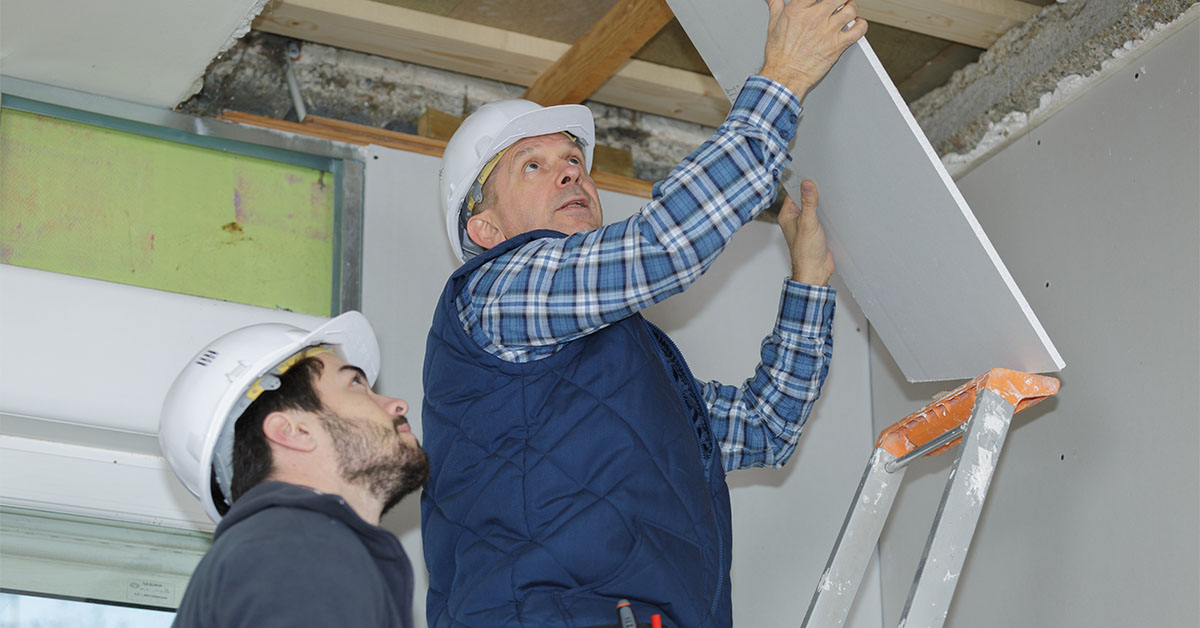
Persistent leaks are another issue that’s hard to tackle on your own. Water can travel along beams and walls before it becomes visible, making it tricky to locate the source. What looks like a small stain on your ceiling might actually signal widespread hidden damage throughout your roof system.
Electrical risks make DIY repairs particularly dangerous. Leaks can lead to wet fixtures or even downed power lines, creating serious hazards. Water around light fixtures and outlets can also pose significant electrical dangers.
Safety concerns should always take priority over saving money. Climbing onto a wet, steep, or damaged roof is risky and can lead to falls or serious injuries. Professional roofers are equipped with the right safety gear and training to handle these situations safely.
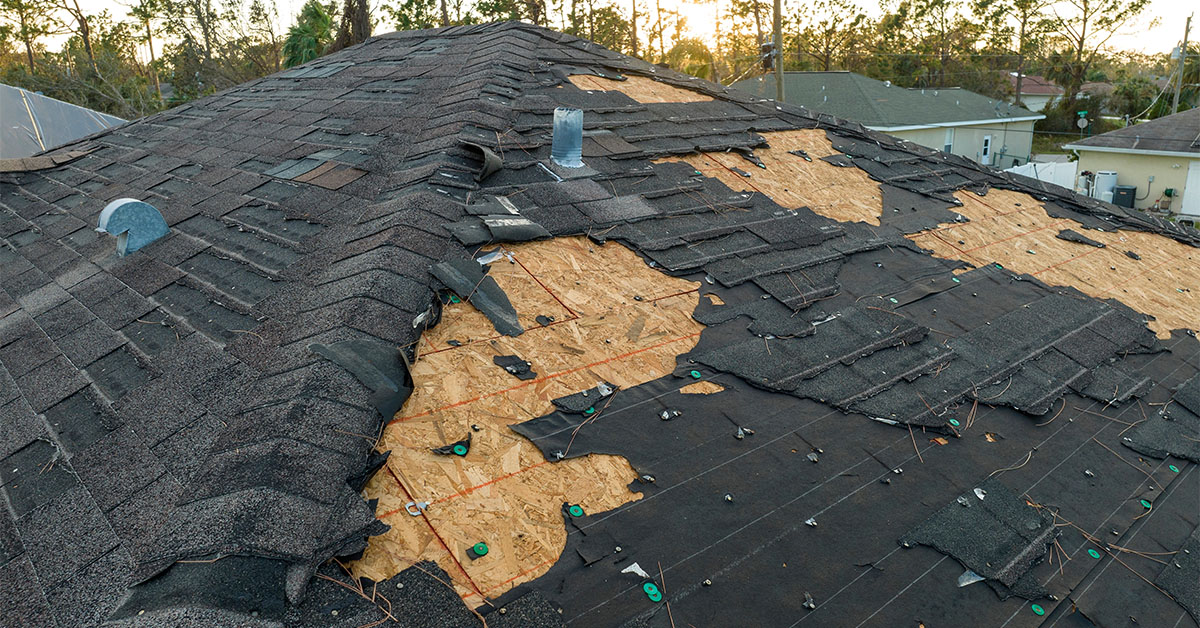
Storm damage often hides problems that aren’t visible from the ground. Hail, strong winds, and debris can cause issues beneath shingles and within the roof’s structure. Without the right tools and expertise, it’s nearly impossible for homeowners to assess the full extent of the damage.
These scenarios are best handled by professionals who have the experience and tools to address them effectively.
Pro-Tech Roofing‘s Services and Expertise
When serious roofing issues arise, Pro-Tech Roofing is ready to provide the specialized care your roof needs. Serving Tulsa-area homeowners, they offer free roof inspections using advanced tools like thermal cameras and moisture meters to uncover hidden damage – equipment most homeowners don’t have.
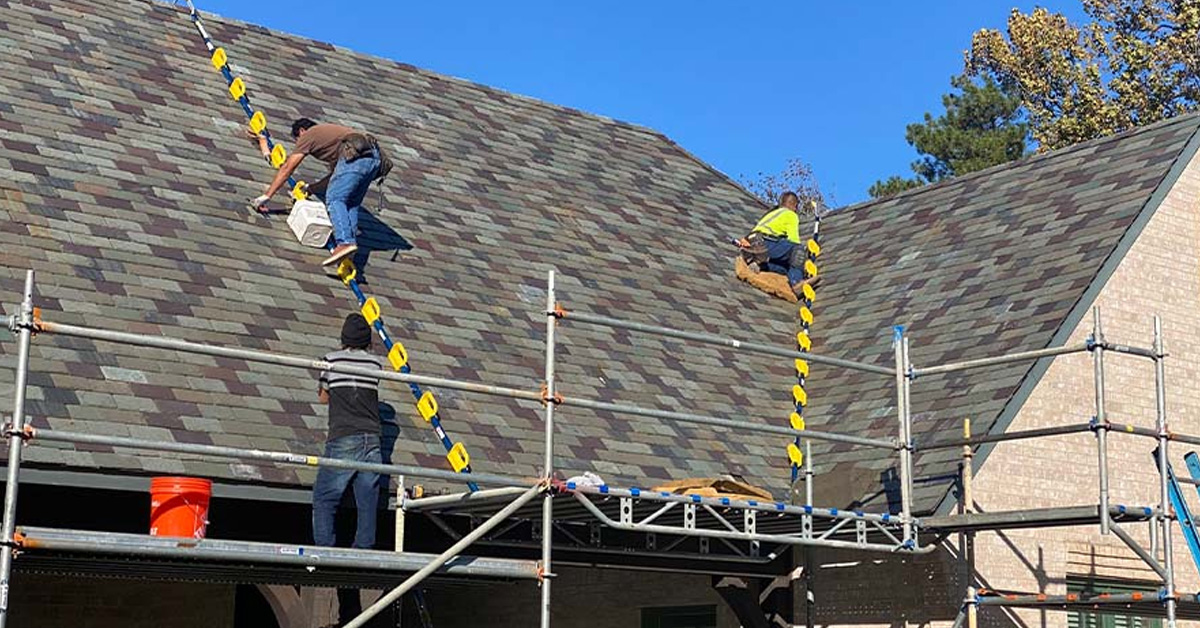
As a licensed and insured contractor, Pro-Tech Roofing works on both residential and commercial properties, ensuring all repairs and replacements meet industry standards. Their certifications from top manufacturers like GAF and Owens Corning also help preserve warranties.
Their services go beyond simple repairs. They handle full roof replacements, metal roof restoration, and even work on historic properties with slate or tile roofing. For commercial properties, they provide flat roof repairs and elastomeric coatings that significantly extend a roof’s lifespan.
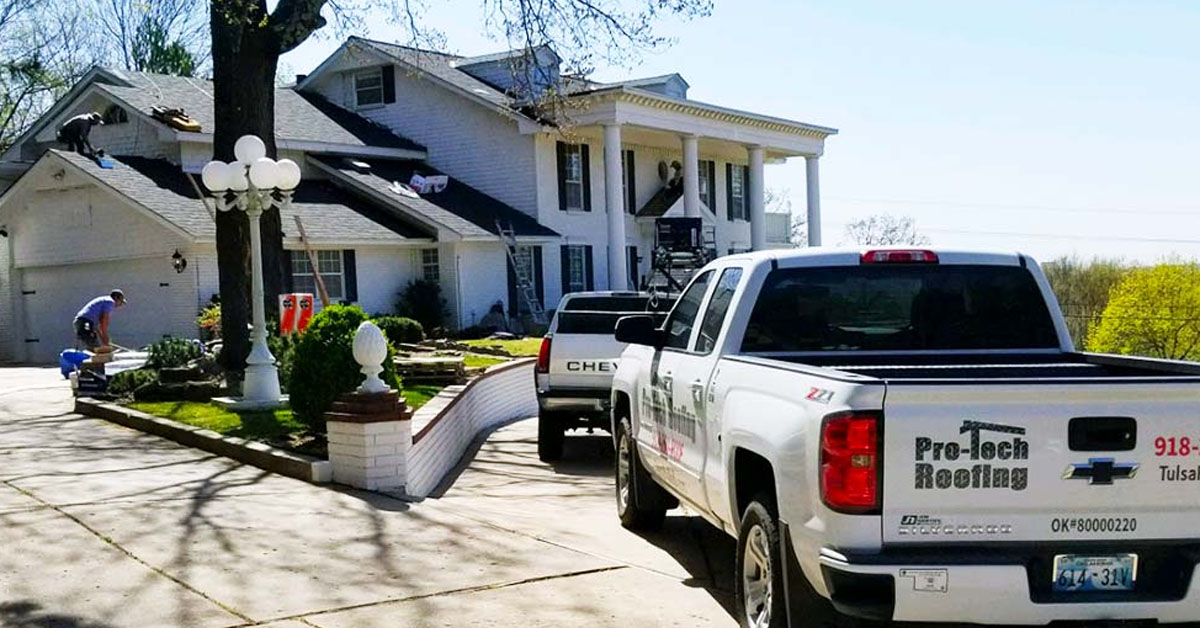
Pro-Tech Roofing also assists with insurance claims, simplifying the process of documenting storm damage and working with adjusters. Their detailed inspection reports can make a big difference in securing coverage for repairs.
For those looking to stay ahead of potential problems, their preventative maintenance programs offer regular inspections and minor repairs, helping to catch issues early – especially valuable for older roofs or properties in storm-prone areas.
Whether it’s structural concerns, leaks, or safety risks, Pro-Tech Roofing’s expertise and advanced tools can uncover and address problems that might go unnoticed during a homeowner’s visual check.
Conclusion: Protect Your Roof and Save Money
Taking care of your roof before problems arise is a smart way to save money and avoid bigger headaches down the line. Catching hidden damage early can prevent costly repairs and help your roof last longer. And when minor fixes aren’t enough, it’s time to bring in the experts.
Routine maintenance and inspections do more than just protect your home – they help you get the most out of your investment. Regular checks can uncover potential safety hazards before they pose a risk to your family.
If you’re dealing with structural damage, ongoing leaks, or storm-related problems, don’t wait – reach out to a professional. Pro-Tech Roofing offers free inspections that can spot hidden issues you might miss on your own.
FAQs
What simple maintenance tasks can homeowners do to help prevent roof damage?
Homeowners can take a few straightforward steps to help ward off roof damage and catch issues before they become serious. Start by examining your roof from the ground using a pair of binoculars. Look for signs like missing shingles, cracks, or areas that appear to sag. These can be early indicators of trouble.
Make it a habit to clean your gutters and downspouts at least twice a year. This prevents water buildup, which can lead to leaks or even structural damage. While you’re at it, clear away debris such as leaves, branches, or moss from your roof. This helps avoid moisture getting trapped, which can cause long-term problems.
Another smart move? Trim back any tree branches that hang over your roof. Not only does this reduce the risk of damage from falling limbs, but it also minimizes excessive shade that can encourage moss to grow. Tackling these simple tasks can go a long way in extending your roof’s lifespan and saving you from expensive repairs later on.
How often should I have my roof professionally inspected to catch problems early?
To stay ahead of potential roof problems and avoid expensive repairs, aim to schedule professional roof inspections twice a year – once in the spring and again in the fall. These times are perfect because they follow challenging weather conditions, like harsh winter storms or intense summer heat, which can often lead to hidden damage.
It’s also smart to arrange an additional inspection after severe weather events, such as hailstorms or strong winds. These checks ensure any damage is caught early. Regular inspections not only safeguard your home but also help you tackle minor issues before they turn into major headaches.
What are the key warning signs of hidden roof damage I should check for in my attic?
When you’re checking your attic for hidden roof problems, there are a few key things to watch for. Start by looking for water stains or discoloration on the ceiling and walls – these often point to leaks. Also, check for mold or mildew, as these thrive in damp areas and could indicate moisture from a roofing issue. Keep an eye on the condition of the wood in your attic. Signs like sagging, cracks, or chipping may signal damage. Another clue to watch for is nails that missed the framing (shiners), which can cause condensation and lead to further issues. Spotting these problems early can save you from expensive repairs later.
